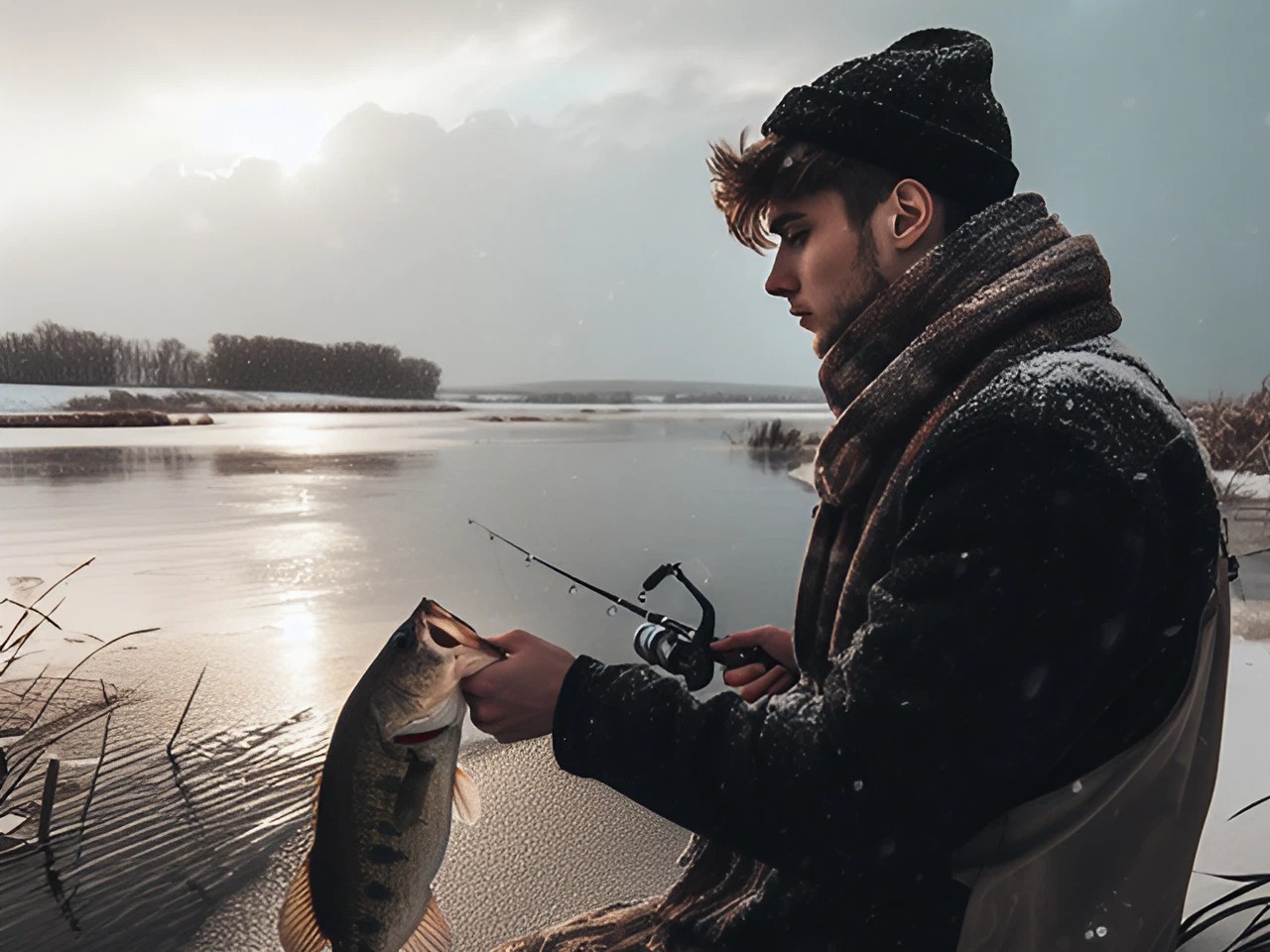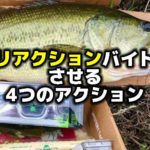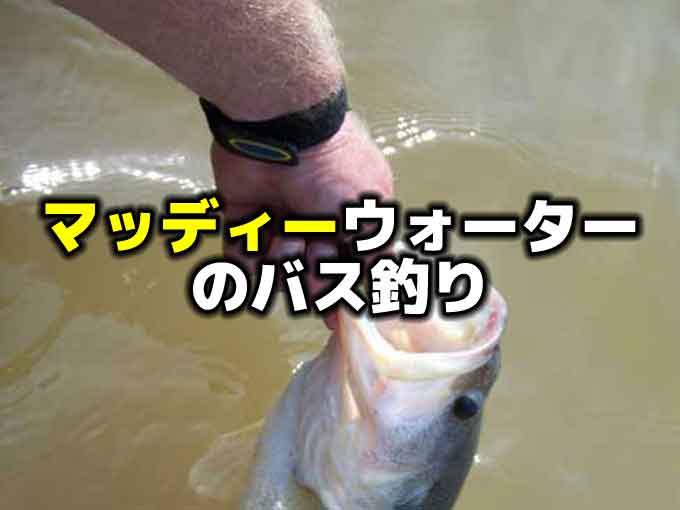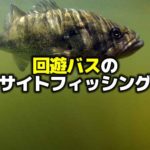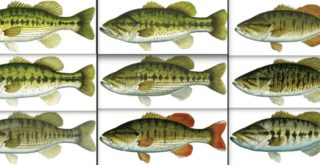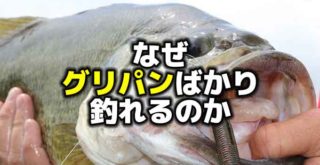季節と水温がバスに与える影響
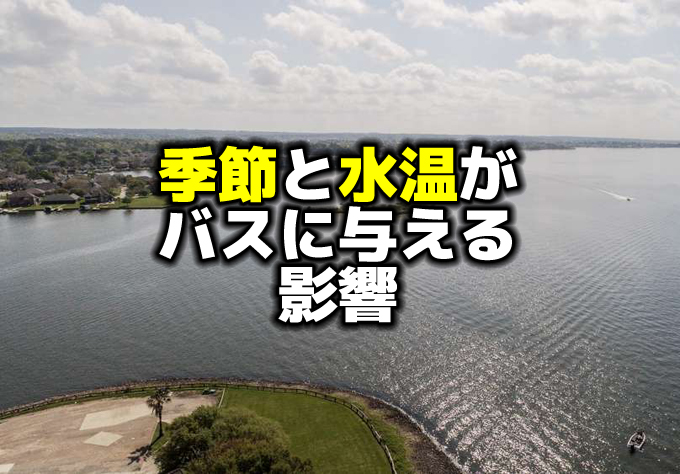
Photo by bassmaster.com
こんにちは!店長の小山です!
本日は海外サイトより、”How seasons and temperature affect bass”という記事を引用してご紹介いたします。
引用先:bassmaster.com”How seasons and temperature affect bass”by David Hart April 2, 2018(海外サイトです)
皆さんはバス釣りをするとき、気温や水温を気にしますでしょうか。
恥ずかしながら、私が釣り場の水温を測るようになったのはつい最近になってからなんです…。特に初心者だったころは全く気にしていませんでした。釣ったことがある場所や、誰かが釣ったのを見た場所へ行き、ひたすら投げていたという感じです。
それからだんだん、水温とバスが釣れる関係が分かってきて、釣り場の水温が気になるようになってきました。気になるようにはなってきましたが、頻繁に測ったりはしませんでした。たまに水温計を買ってはみるものの、すぐ失くしてしまったこともあり、あまり水温計という道具に固執していなかったんです。
ですので、温度を気にするといっても、天気予報で気温を見たり、釣り場についたら水に手を入れてどんな感じかを感じる程度です(笑)。
逆に、今は水温計付きの魚探を使うようになり、水温を見なければ気が済まないほどの身体になってしまいました…。オカッパリの時も非接触型の水温計を買い、こまめに測ったりして、失くさないように大事に持ち歩いています。
バスは人間のように決まった住宅がありませんから、その時期その時期で居心地のいいベストな場所へ向かい、そこに居着く魚だということがわかっていますので、色々な条件を加味して魚の居場所を突き止めること、これがバスフィッシングの楽しみのひとつだと思います。
ですので、水温などといった自分なりのデータを取ることは、自分なりのバス釣りの楽しさをより深めるものになります。その楽しさをもっと早くやっておけばよかったと後悔することを、あの頃の私は知らなかったんです(笑)
しかし、きちっと水温を測ったとして、そのデータをきちんと生かし切ることができているのでしょうか。そう考えると、私にはまだまだ自信は持てません。
自分がやっていることと、バスの生態をリンクさせることができなければ意味がないんですよね…。
この記事は、アメリカバスマスターのプロで、2016年に亡くなったケン・クック氏の2007年当時の記事を、記者のデビッド・ハート氏が編集したもので、季節と水温がバスに与える影響がまとめられたものです。
偉大なるクラッシックウィナーが辿り着いた気温と水温とバスの関係とは、いったいどういったものだったのでしょうか。
皆さんもぜひ読んでみて下さい。
バスは変温動物である
Bass are confusing creatures. If you’ve spent much time trying to catch them, you already know that. One day you can’t keep them off your lures. Come back to the same lake a week later, and it seems like every fish has packed a suitcase and left the state. Bass don’t travel, of course, at least not out of their home waters, but their moods change often, which is why bass that were so active one day may seem like they have taken a vacation the next time you go fishing. More than likely, something in their homes has changed. Those changes are probably the result of a change in the water temperature or the season. Both play a major role in how bass behave.
Although bass adjust to changes in their environment, they’re easier to catch during certain times of the year because they’re easier to find and more willing to eat. That’s why fishing can be so good in the spring and early summer and again in the fall. But Ken Cook, a retired fisheries biologist and a professional bass angler, said it’s a mistake to say bass prefer one season or another or that they “like" a certain temperature range.
“Bass are cold-blooded, so they are more active in warmer water because their metabolisms are faster. Their bodies use more energy, so they need to eat more often," the 1991 Classic champ explained. “But that doesn’t mean they aren’t active at all in cold water. They just eat less when they’re cold. Humans are similar because we need to eat more when we’re more active because we burn up more energy."
Water temperatures change as the seasons change, and although temperature and seasonal variations both play different roles in bass behavior, the two are linked. We all know that lakes, rivers and ponds are colder in the winter, hotter in the summer, and somewhere in between in the spring and fall, but do you know bass move as the seasons and temperatures change? That’s why we catch them in shallow water sometimes and in much deeper water at other times.
バスはややこしい生き物です。あなたがバスを釣りに長年取り組んできているのならば、すでにご存じのことと思います。ある日は、あなたのルアーにかなりの好反応を見せていたのに、一週間後に同じ湖に来たら、すべての魚がスーツケースを持って旅行にでも出かけてしまったような結果に終わることもあります。もちろんバスはあなたのホームレイクを出て長い間旅行に行くなどということはありませんが、バスの気分が変わってしまうことがあるので、次の釣りのときには、あの日あんなにアクティブだったバスたちが休暇を取ったように見えてしまうのです。おそらく、ホームレイクで何かが変わったのでしょう。変わったというのはおそらく、水温や季節の変化のことでしょう。両方ともバスの振る舞いには大きな影響を与えます。
バスは環境の変化に適応するものであり、バスを見つけやすく、食い気が多いような特定の期間であれば釣るのが簡単です。そういう意味で、春から初夏と秋にはとても良い釣りになることがあります。しかし、バスプロと漁業生物学者を引退したケン・クック氏は、バスがある季節やまた他の季節を好むだとか、特定の温度が好きだと言うのは間違いだと言います。
1991年のクラシックのチャンピオンであるケン・クックは、「バスは冷血動物(変温動物)ですので、暖かい水では代謝が速くなるため活動的です。体がより多くのエネルギーを使うようになるので、頻繁に食べる必要があります。しかし、それは冷たい水の中ではまったく活発ではないということを意味するのではありません。バスは寒い時には食事が減るだけです。」
季節が変われば、水温も変わります。温度と季節の変化はどちらもバスの動きにおいて異なる役割を果たしますが、両者は関連しています。冬になれば湖、川、池は冷たくなり、夏は温かくなり、春と秋はその中間であるということは誰もが知っていますが、季節や温度が変わるにつれてバスの動きがどのように変化するかが分かりますか?そういうわけで、私たちは時にはシャローで、またある時はディープで、バスをキャッチします。
季節ごとのバスの動き
Confused? That’s okay. Even Cook, a 14-time Bassmaster Classic qualifier, didn’t fully understand how natural variations in weather and seasons affect fish. Nobody really has all the answers. But based on his lifelong experience as a bass angler and biologist, he had a good understanding of where to find bass as the seasons change and as the water temperatures rise and fall.
“They really don’t move that far. It’s more of an up and down movement. They go shallow and deep all within the same relatively small area as the seasons change, but they don’t migrate from one end of the lake to the other," he explained.
As winter gives way to spring and longer, warmer days heat the water, bass start thinking about spawning, so they move into shallow water because bass eggs need sunlight and warmth in order to hatch. Bass eat more often in warmer water, which makes catching them seem pretty easy sometimes. They stay shallow — typically less than 8 feet — until hot summer days push water temperatures into the high 80s. That’s when they start to move out to deeper, cooler water where they stay until the shallower water starts to cool again in the fall.
Food is what really dominates the lives of bass. In the spring and fall, the “grocery store" is usually close to the shoreline and around cover like aquatic grass, rocks and docks. Small fish, crawfish, frogs and other creatures are most abundant and most active in shallow water, so that’s where the bass will be.
“A primary reason they go to deeper water in the summer and winter is that it’s more stable. There are fewer temperature and oxygen level fluctuations, which bass don’t seem to like," said Allen Forshage, director of the Texas Freshwater Fisheries Research Center. “Shad also go out to deeper water, and they’re an important food source for bass. If a lake has shad, the bass tend to follow them in the summer and winter. Even bluegill will move out to deeper water during those seasons."
How deep do they go? It depends on the lake, but they can stay shallow if a few basic needs are met, or they could go to cover that’s 25 feet or deeper. Cook caught spotted bass that were 60 feet below the surface in some deep, clear lakes in Arkansas, but Forshage said there is virtually no oxygen below 15 feet in most Texas lakes in the summer.
“Oxygen is a limiting factor. Bass and all fish need it to survive, so in many cases, they can’t go any deeper than 15 feet," he said. “It depends on the lake or the region of the country."
He adds that those bass that do stay shallow in the summer seek darker, cooler water when it gets hot. That can be shade provided by a dock, aquatic plants or a fallen tree. Cook said bass in clear lakes will often retreat to deep water in the summer to find that shade if they have food and oxygen, but bass living in murky water will often stay close to shore throughout the summer.
For much of the year, temperature really isn’t that important. Bass can tolerate high and low temperatures pretty well. Cook said he only pays attention to his boat’s thermometer when it’s very hot — above 85 degrees — or very cold — which to him is anything below 50. But if it’s between 55 degrees and 85 degrees, temperature really doesn’t affect bass behavior all that much. They’ll usually be in shallower water.
Remember, the air temperature doesn’t have any effect on bass.
“As the water starts to cool again in the fall, forage fish such as shad move shallow, so the bass follow. In many cases, shad move toward the backs of long coves and bays, so the bass are in those same places," explained Cook.
As the days shorten and the air temperature falls, the water starts to get cold. Once the temperature reaches 50 degrees, the bass start moving to deeper water where they’ll spend most of the winter. Although bass eat less in the winter, they still have to eat something occasionally. That’s why catching bass in the winter can be tough; but it’s not impossible. When Cook fished in the winter, he liked to spend time on the water after a couple of warm, sunny days have raised the water temperature a little. A few degrees difference can really put the fish in the mood to eat.
“You have to keep in mind that in the winter, bass don’t need to feed much at all, so don’t expect to catch a bunch. If you can catch a couple in a day, you’ve done pretty well," he explained.
Of course, if you catch bass any time you go fishing, you can consider yourself fortunate … maybe even good. After all, it takes more than luck to understand how bass relate to water temperature and the changing seasons. It takes practice and lots of it. The more you fish, the better you’ll be at finding and catching bass, no matter the time of year.
ややこしいでしょう?でも大丈夫です。天候や季節などの自然における変化が魚にどのような影響を与えるのかについて、バスマスタークラシックの予選を14度もクリアしたクックでさえ、完全には理解していません。誰もが、本当の答えなど持っていないのです。しかし、バスアングラーそして生物学者としての彼の生涯にわたる経験に基づき、季節の変化と水温の上昇や下降に応じてバスのいる場所をよく知っていました。
「彼らは実際にはそれほど遠くまで移動するということはなく、上下の移動のほうが多いのです。季節が変わるごとに同じ比較的狭い範囲内でシャローとディープを行き来し、湖の端から端まで移動するようなことはありません。」と彼は説明します。
冬から春になると、暖かい日は水を熱し、バスはスポーニングのことを考え始めますが、孵化させるためにはバスの卵に日光と暖かさが必要なため、シャローへ移動します。バスは暖かい水の中では頻繁に食べるようになるため、釣るのがかなり簡単に感じるようになります。彼らは暑い夏の日によって水温が27℃を越えてくるまで、基本的には水深2.4メートル以下のシャローにとどまります。秋になりシャローの水温が下がり再び涼しくなるまで、よりディープの涼しいエリアに移動し始めます。
食べ物は、バスの生活を支配するものです。春と秋の「食料品店」は通常、岸に近く、水草、岩や桟橋のようなカバーの周りにあります。シャローエリアでは小魚、ザリガニ、カエルや他の生き物が最も豊富で最も活発であるので、バスもそこにいます。
「夏と冬にディープに行く主な理由は、安定していているということです。水温や酸素レベルの変動が少ないのですが、どうもバスはそれが好きというわけではないようです。」とテキサス淡水水産研究所の責任者、アレン・フォルシャージ(Allen Forshage)は言います。 「シャッドもディープに落ちており、バスの重要な食糧源になっています。湖にシャッドがいるようであれば、夏と冬にはバスはそれを追うようになります。ブルーギルでさえ、その季節にはディープに移動します。」
では彼らはどれくらいの深さまで行くのか?それは湖によります。いくつかの条件が揃うことでシャローに残ることもありますし、7.5メートルより深いカバーに向かったりします。クック氏は、アーカンソー州の深いクリアレイクの水深18メートルにいるバスをキャッチしました。しかしフォルシャージ氏によると、夏にはほとんどのテキサス州の湖では水深4.5メートルより深くなると酸素がほとんどないとのことでした。
「酸素は制限要因であり、バスやすべての魚は生き残るためにも必要なので、多くの場合、4.5メートルより深くにいることはできません。 ただしそれは湖や国の地域によって異なります。」彼は言います。
彼は、夏にシャローに残ったバスは暗いところや冷たい水を求めていると付け加えています。それは、桟橋、水生植物、レイダウンによって提供される日陰である可能性があります。クック氏は、クリアレイクのバスは、夏は暗いディープに食べ物と酸素を見つけるためによく落ちていきますが、濁った水の中に住むバスは夏の間は岸近くにとどまることが多いといいます。
年間を通して、気温はそれほど重要ではありません。バスは高温から低温までかなり耐えることができます。クック氏はボートの水温計に注意するのは非常に高い(29℃以上の)とき、または冷たい(10℃以下の)ときだけということでした。しかし、12.7℃から29℃の間であれば、水温はバスの振る舞いにはそれほど影響しません。彼らは通常、シャローにいるのです。
気温はバスに影響しないことを覚えておいてください。
「秋になり再び水が冷え始めると、シャッドなどのベイトフィッシュがシャローへ動くので、バスも続きます。多くの場合、シャッドはワンドや長いワンドの奥へ移動するので、バスも同じ場所にいます。」とクックは説明します。
日が短くなり、気温が下がってくると、水も冷たくなり始めます。水温10℃に達すると、バスは冬の大半を過ごすディープへ移動し始めます。バスは冬には多くは食べませんが、時々は何かを食べなければなりません。このため冬のバスを捉えるのはタフになりますが、不可能ではありません。クックが冬に釣りをするなら、暖かく晴れた日が水温を少し上げた後に釣りをするのが好きでした。その数度の違いが、実際に魚が食べる気分に変えることになります。
「冬はバスはあまりフィーディングする必要がないので、多くを釣ることは期待しないでください。一日で2本を釣ることができればノルマ達成というところでしょう。」 彼は説明します。
もちろん、あなたが釣りに行き、バスをキャッチするときはいつでも、あなたは自分自身を幸運だと思うかもしれません。それもまたいいでしょう。結局のところ、バスが水温や季節の変化にどのように関係しているかを理解するには、運も必要なのです。多くの練習と運を必要とするのです。より多くの魚を釣ることで、よりバスを見つけたり釣ることができるようになり、季節は関係なくなってくるのです。
こらーっ!
ここまで読ませておいて最後は運とかどういうことですかーっ!
と思いますよね(笑)
しかしケン・クック。大雑把な解説かもしれませんが、それでも彼が季節ごとのバスの動きをかなり捉えていることは良くわかりましたよね。
しかし、季節と水温の変化とバスの関係がテーマなのに、だいたいはバスの適水温なんだから水温はあまり気にするなというあたり、矛盾があるようにも感じます。
それは、詳しく書こうと思えばいくらでも書けるのでしょうけど、それこそ本を1冊くらいになってしまうのかもしれませんし、季節や水温によるベイトの動きを追った方がいいですよと言っているようにも思えました。
(ちなみに、この記事でシャッドというベイトフィッシュの名前が出てきましたが、シャッドは日本にはいません。代わりに、ワカサギが年間を通してシャッドとほとんど同じ動きをしていますので、ワカサギのいる湖をイメージされればいいかと思います。)
水温があまり意味を持たないのだとしたら、最初に私が「水温とバスが釣れる関係が分かってきまして」、なんて書いたのが恥ずかしいじゃないですか(笑)
でも、いいと思います。
自分なりの基準のようなものを持って、自分なりに攻めて、違ってたら修正する。この繰り返しは多分、一生続けられます。これほど終わりがなく、果てしないことなのに、辞めたくなることがないのですから、それでいいと思います。
釣れなくたって、知らないことが多くたって、恥ずかしがらずにやっていけばいいと思います。
しかし、偉大なるケン・クックが亡くなる10年前に書いたこのコラム。深いです。賛否あるかと思いますが、最終的には深く考えないというところに行きつくのかもしれません。
皆さんはどうお考えになりますか。
それでは、また。
毎度ありがとうございます!







